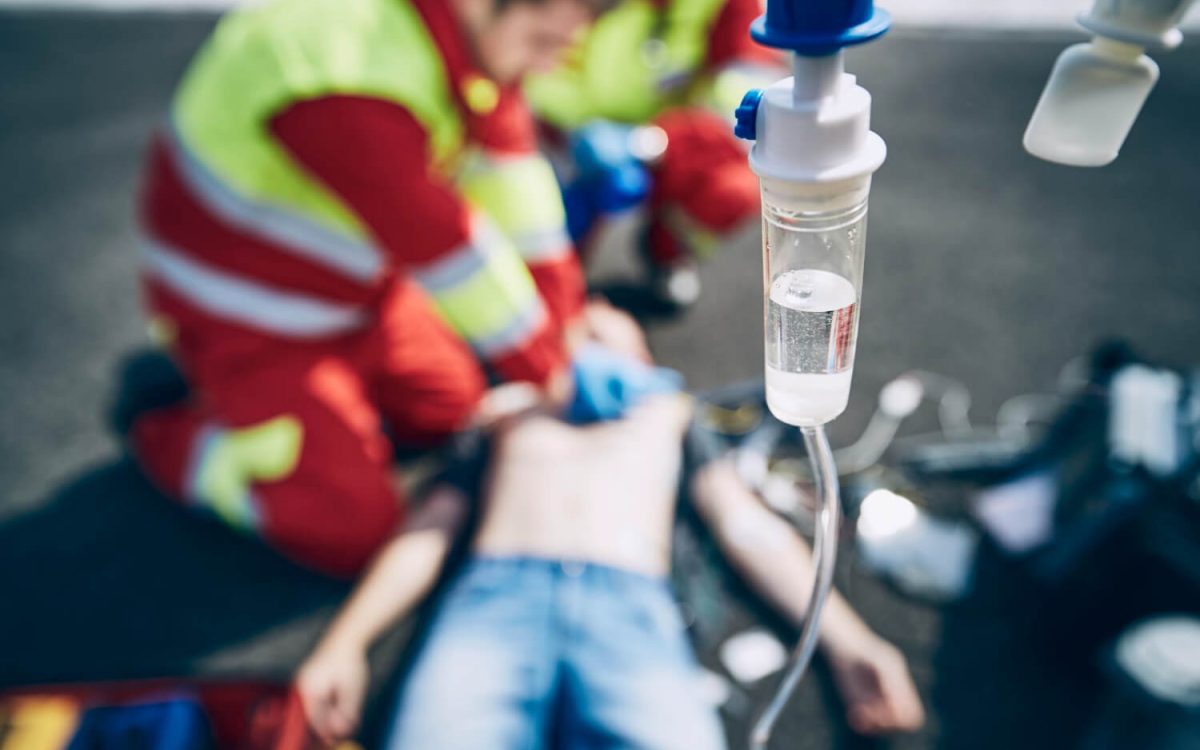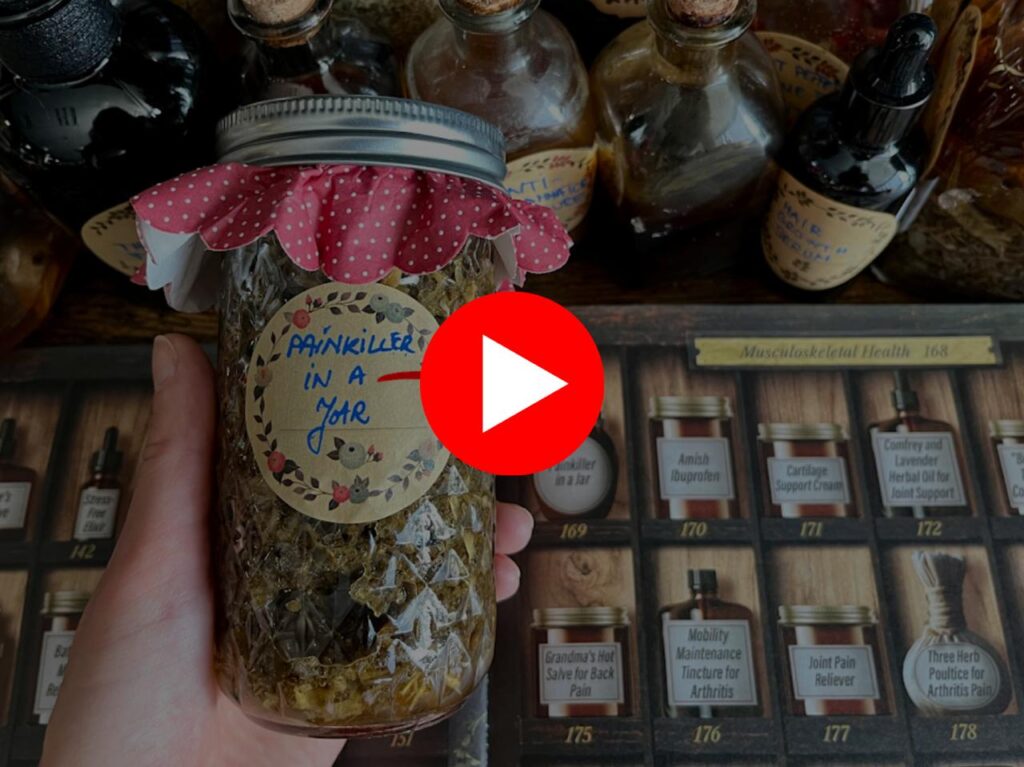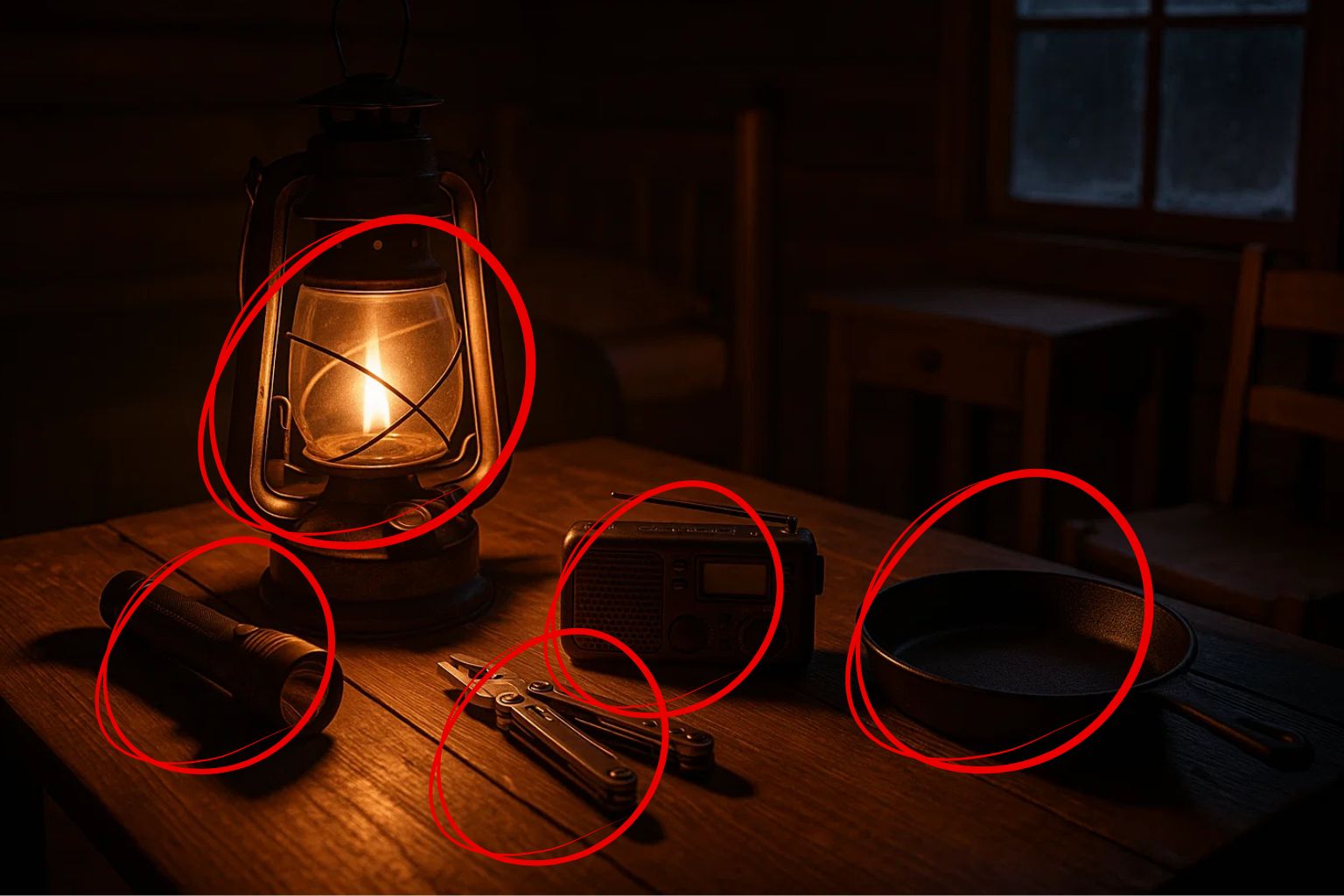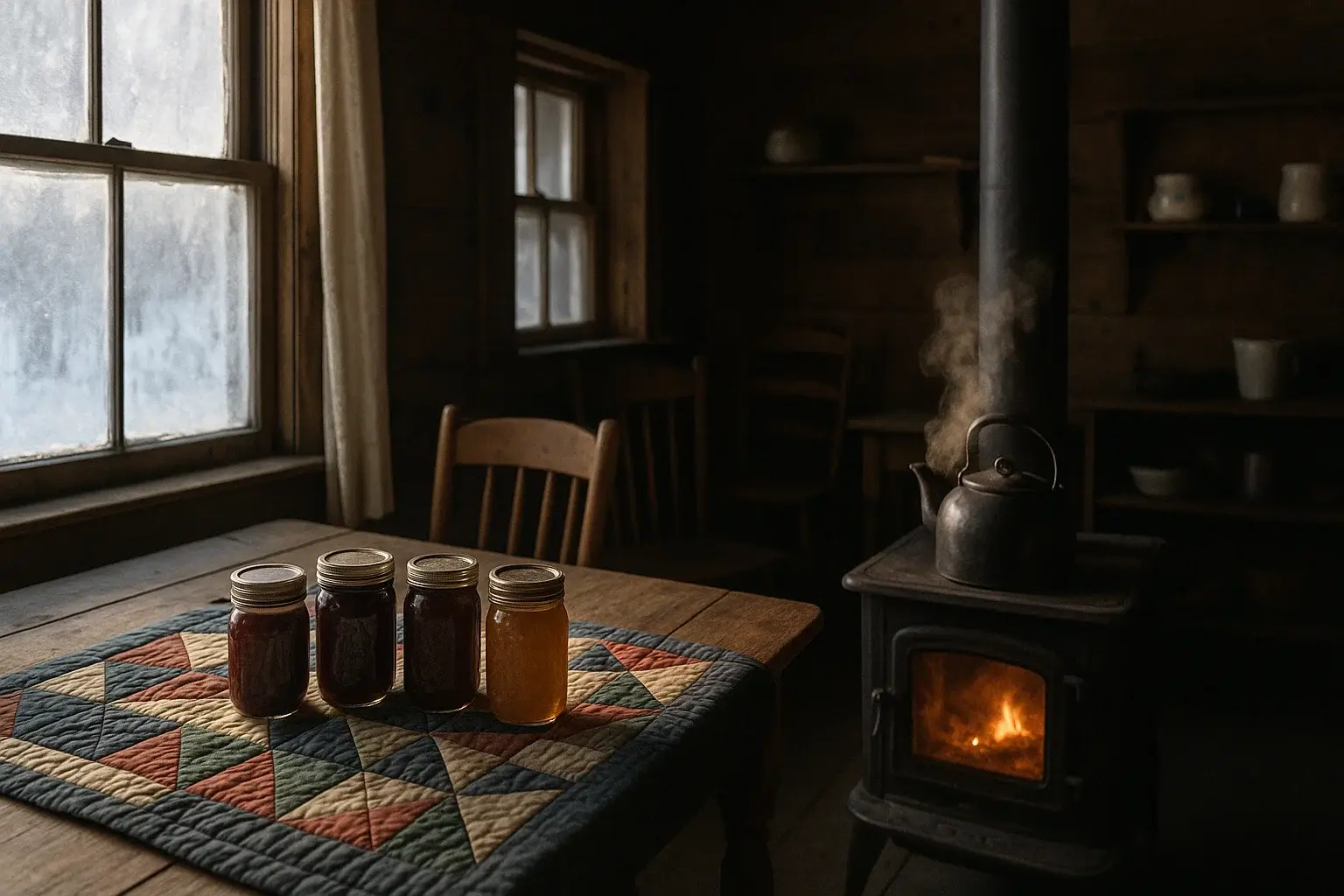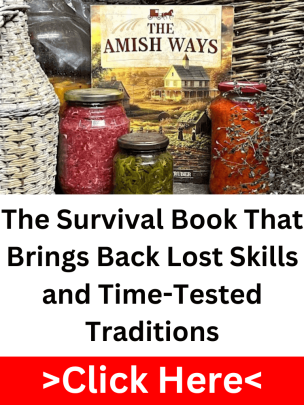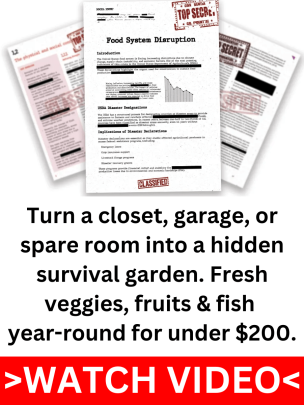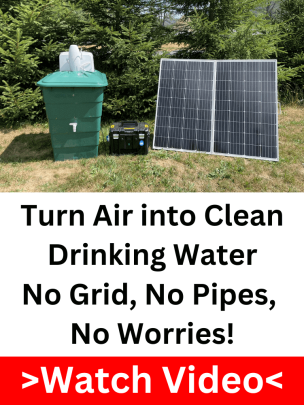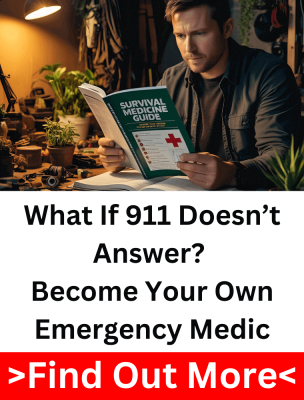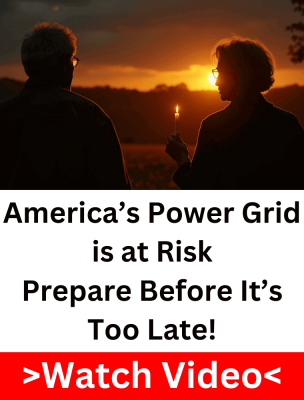Most folks picture the big dangers after collapse as looters, fires, or gunfights. The truth is uglier and far more ordinary. The killers that show up in a real SHTF event are the disaster medical emergencies nobody prepared for, the heart attack brought on by stress, the cut that festers into infection, the asthma attack when the inhaler runs out. They’re not dramatic scenes from a movie; they’re the preventable crises that quietly take lives when the system we’ve leaned on our whole lives suddenly isn’t there.
Why Small Problems Become Big Killers After SHTF
Day to day, we don’t think twice about how much modern healthcare cushions us. A deep cut? Head to urgent care. Chest tightness? Call an ambulance and be in the ER within minutes. Even a sore tooth or sinus infection usually gets fixed with a prescription and a quick pharmacy run. Antibiotics, painkillers, clean dressings, they’re always just around the corner, and we’ve grown used to that safety net.
Take all of that away, and suddenly the smallest issues turn into major threats. A blister from chopping wood can become a festering infection. A kitchen burn can spiral into weeks of pain and risk of sepsis. Dental problems, dehydration, even untreated allergies can knock a person flat. These aren’t distant possibilities, they’re the kind of medical emergencies after disaster that creep in when hospitals are dark and supplies stop flowing. Without the system backing you up, the little things become the killers.
How to Use This List Like a Field Guide
This isn’t medical advice, and it’s not meant to replace professional care. What follows is a prepper’s field checklist, the kind of situations you need to recognize and be ready to handle when professional help isn’t an option. Think of it as a survival map, pointing out the danger zones so you can prepare your own way through them.
As you read through these survival medical emergencies, stop and ask yourself: Could I deal with this if no doctor was coming? That simple question changes how you see your supplies, your skills, and your mindset. If the answer feels shaky, that’s where you know it’s time to shore up your plan.
The Big Killers You Must Spot Fast
Heart Attacks in the Dark
When stress, poor diet, and heavy lifting collide during a crisis, heart attacks become one of the most dangerous disaster medical emergencies. Add in long nights, high anxiety, and the grind of survival work, and the odds climb even higher.
The warning signs are usually there: crushing chest pain or tightness, pain spreading to the arm, neck, or jaw, sudden shortness of breath, cold sweats, or a feeling of doom that comes out of nowhere. Recognizing these signals early can be the difference between life and death.
Other Article: What Our Grandparents Knew About Winter Survival That We Forgot
If it happens when hospitals are off the table, immediate steps matter. Have the person rest in a comfortable position, loosen clothing, and keep them calm. Some preppers keep aspirin on hand since chewing one tablet can thin the blood and may help, but it’s not a cure, and it carries risks, especially for people with certain conditions. The takeaway is simple: learn to spot it, stay calm, and be ready with what you have.
Stroke: Every Minute Counts
Strokes strike fast and leave permanent damage if ignored. That’s why the FAST or BE-FAST check is drilled into first responders: Face drooping, Arm weakness, Speech difficulty, Time to act, plus Balance problems and Eye changes for the extended version. If any of those signs show up, it’s a stroke until proven otherwise.
Without hospitals or CT scans, there’s no magic fix in a grid-down event. What preppers can do is recognize the symptoms immediately, keep the person safe from falls or further harm, and get them to higher care if any path exists. Even if treatment is delayed, early recognition helps you adjust priorities and resources around someone who may not bounce back quickly.
Sepsis: When a Small Cut Turns Deadly
In an environment where clean water is scarce and infection risk is everywhere, sepsis is a silent killer. A cut from chopping wood, a scrape from rusty metal, or even a neglected blister can spread bacteria through the bloodstream. Once that happens, the body’s response can spiral out of control.
Red flags to watch for: fever or chills, confusion, rapid breathing or heart rate, and red streaks running up from the wound. These are warning signs that infection has jumped from local to systemic.
Prevention is the best defense. Clean wounds thoroughly with safe water, keep them covered, and rotate dressings daily. Have backup supplies of antiseptics, gauze, and gloves in your kit. In the world of austere medicine for preppers, small habits, washing hands, boiling water, and keeping wounds dry, mean the difference between healing and a nightmare that takes someone down.
Breathing Crises and Allergies That Spiral
Anaphylaxis: Seconds to Act
Food allergies, insect stings, and certain medications can all trigger anaphylaxis, a sudden, full-body reaction that shuts down airways and blood pressure in minutes. It doesn’t wait until morning, and it doesn’t care if you’re miles from help.
For preppers, the only real lifesaver here is epinephrine. One shot can stop the spiral, but sometimes a second dose is needed if symptoms don’t ease within 5–15 minutes. Antihistamines and herbal tricks won’t cut it when the throat is swelling shut, they’re too slow. In any list of prepper medical emergencies, this is one that demands you have the right tool ready at arm’s reach.
Asthma Attack Without a Pharmacy
In a post-collapse world, asthma gets worse fast. Smoke from cooking fires, mold in damp shelters, and dust from cleaning up rubble all make attacks more likely. Without a pharmacy on every corner, breathing problems become one of the more dangerous grid down medical care challenges.
Other Article: 11 Plants That Can Replace Store-Bought Medicine in an Emergency
Rescue inhalers are worth their weight in gold, stockpiling extras, rotating them, and keeping them dry should be part of your plan. Natural methods like steam inhalation or strong coffee may give temporary relief, but they’re not substitutes. The smartest move is prevention: keeping living spaces clean, well-ventilated, and smoke-free whenever possible.
Heat, Cold, and Invisible Poisons
Heatstroke & Severe Dehydration
When the power grid fails during summer, fans and air conditioning are gone, and heat deaths climb fast. Cities turn into ovens, water supplies run short, and people push themselves harder than they should while working outside. It’s a setup for one of the deadliest medical emergencies after disaster, heatstroke.
The warning signs matter: heat exhaustion shows up as heavy sweating, dizziness, nausea, and fatigue. Heatstroke is worse, confusion, rapid heartbeat, flushed skin, and body temperature climbing over 104°F. At that point, it’s life-threatening.
Cooling methods don’t need to be fancy. Strip off extra clothing, move into shade, sponge with cool water, or fan the body while misting. If you’ve got the option, immersing in a tub or stream works even better. Oral rehydration solutions (ORS) are critical for dehydration; a simple mix of water, salt, and sugar can save lives when electrolytes are gone.
Hypothermia & Frostbite
Grid-down winters are just as brutal. Without steady heat, homes turn into iceboxes and even a short trip outside can be risky. Hypothermia sneaks up when body temperature drops, causing shivering, confusion, and slowed movement. Frostbite follows when exposed skin freezes.
Prevention is simple but takes discipline: layer clothing, keep socks and gloves dry, and use safe backup heat sources. If frostbite sets in, don’t rub the skin, that causes more damage. Rewarm in lukewarm water, ideally between 98–102°F, and protect the tissue from refreezing. In post collapse medical care, warmth becomes as valuable as food.
Carbon Monoxide Poisoning in Blackouts
Every major storm leaves a trail of deaths from carbon monoxide poisoning. It happens when folks run generators in garages, light charcoal grills indoors, or burn fuel too close to their shelter. With no power and cold nights, the temptation is real, and deadly.
The rule is clear: keep generators at least 20 feet away from any door or window. Never use grills, camp stoves, or heaters inside. Early symptoms feel like the flu, headache, dizziness, nausea, but they can turn fatal before you know it. CO detectors with battery backup are cheap insurance and should be part of any austere medicine for preppers kit.
Wounds, Burns, and Bone-Breakers
Uncontrolled Bleeding (Tourniquet Territory)
In the chaos after a disaster, accidents multiply. A slip with an axe, a car crash on a dark road, or even a fall from a ladder can leave someone bleeding heavily. Out of all prepper medical emergencies, uncontrolled hemorrhage is the fastest killer.
The rules for tourniquets are simple but strict: place it two to three inches above the wound, never over a joint, and tighten until the bleeding stops. If one doesn’t do the job, add a second right above it. Don’t loosen it to “check”, once it’s on, it stays on until proper care is available.
Other Article: The Soap Trick That Keeps Bugs Away in Summer
For wounds where a tourniquet won’t work, like groin or shoulder injuries, packing with hemostatic gauze and applying a pressure bandage is the move. Firm, steady pressure is often the only thing standing between life and death when higher care isn’t coming.
Burns That Don’t Heal
In a grid-down world, burns become common: cooking over open flames, handling lantern fuel, or knocking over a candle in the dark. What might be a minor injury today can quickly turn serious without treatment.
The field protocol is clear: cool the burn with clean, cool water for at least 10 minutes, then cover loosely with a sterile dressing. Don’t apply ice, butter, or grease, those old myths only make things worse. Burns on the face, hands, or covering a large area are red flags that demand close monitoring and, if possible, evacuation.
Broken Bones & Back Injuries
Heavy lifting, clearing debris, and falls are all part of post-disaster living. Broken bones and back injuries climb fast under those conditions. Without hospitals, they’re tough to manage, but not impossible.
Improvised splints can be made from boards, sticks, or even folded magazines, as long as the limb is immobilized above and below the break. Keep the person still, padded, and as comfortable as possible. For spinal or back injuries, avoid moving them unless their life is in danger from staying put. In the realm of grid down medical care, the priority is stabilizing and preventing further harm until real treatment is available.
Gut, Water, and Tooth Troubles
Food Poisoning & Diarrhea
When the grid is down, refrigeration stops and clean water gets scarce. Leftovers spoil, wells get contaminated, and people end up drinking from sources they’d normally avoid. That’s why food poisoning and diarrhea skyrocket in post collapse medical care situations.
The real danger isn’t just the stomach cramps, it’s dehydration. Oral rehydration solutions (ORS) are lifesavers: clean water mixed with the right balance of sugar and salt. If someone can’t keep fluids down, shows signs of confusion, or their condition worsens after 24 hours, it’s time to treat it like a serious survival medical emergency.
Dental Abscess: Pain That Turns Deadly
Dental infections don’t get much attention in prepping circles, but they should. An untreated abscess can spread bacteria into the bloodstream and become life-threatening. The pain alone can cripple morale and function.
Field relief options are limited, rinsing with clean saltwater, managing pain, and, if you’ve stockpiled them, carefully using antibiotics when infection spreads beyond the tooth. Long term, prevention is the best prep: regular flossing, sealing cracks, and having a backup dental kit with extraction tools if things truly go south.
Diabetic Crises (Too Low, Too High, No Fridge)
Insulin dependency changes the survival equation. Without reliable refrigeration, managing diabetes in a collapse is one of the hardest prepper medical emergencies.
Most insulins can last close to a month at room temperature if kept out of direct heat. Low-tech hacks like clay pot coolers, underground storage, or insulated containers buried in shaded soil can stretch their lifespan when power is gone. Still, nothing replaces proper refrigeration, so rotation and redundancy are key.
Other Article: The Grocery Items That Disappear First in a Blackout
The signs are distinct: low blood sugar brings on sweating, confusion, shaking, and fainting; high blood sugar causes thirst, frequent urination, nausea, and, in severe cases, a fruity smell on the breath. Knowing these differences and acting fast, sugar intake for lows, hydration and insulin for highs, may be the only way to keep someone stable in the field.
Wild Card You Didn’t See Coming
Snakebite (US Survival Context)
Head into rural areas or a bug-out location and the odds of running into venomous snakes rise. Clearing brush, stepping over logs, or reaching into woodpiles without looking first can put you right in striking range. In a survival setting where boots, gloves, and caution slip, a bite can turn into one of those disaster medical emergencies you never planned on.
What you do next is critical, and so is what you don’t do. Forget the old cowboy tricks: cutting the wound, trying to suck out venom, or packing it in ice only make things worse. The right move is to stay calm, immobilize the limb at heart level, remove rings or watches before swelling sets in, and get to antivenom care if it’s at all possible. In austere medicine for preppers, keeping movement minimal and symptoms monitored is the best field management you’ve got until proper help is on the table.
Quick-Action Playbook: The “Do This, Not That” Survival List
When it comes to disaster medical emergencies, a few fast moves make all the difference. Stop major bleeding with a tourniquet, cool burns right away with clean water, hit anaphylaxis with epinephrine, and use oral rehydration solution to fight dehydration. These simple steps cover some of the most common killers when the system’s down.
Visit the store page to grab the best deals!
Just as important are the things you don’t do. Don’t slap ice on a burn. Don’t cut or suck a snakebite. Don’t assume antibiotics prevent tetanus, only vaccination does. These bad habits waste precious time and often make the situation worse.
At the end of the day, survival isn’t about luck. It’s about having the right tools, the right mindset, and the know-how to use both. In a world of austere medicine for preppers, knowledge plus a stocked kit is the edge that keeps you and your family alive.
Supply Bench: What Covers Most of These Nightmares
You don’t need a hospital wing to keep people alive, just the right compact tools. A quality tourniquet for uncontrolled bleeding, ORS packets for dehydration, epinephrine for allergic shock, and even a small dental kit for abscess relief can stop problems from snowballing. These are the backbone items that cover a wide swath of survival medical emergencies without weighing your bag down.
But gear alone isn’t enough. Redundancy matters, one tourniquet won’t cut it if you lose it or it breaks, and medicines expire faster than you think. Rotate your stock, keep backups, and store them smart. In real grid down medical care, it’s not the giant stash that saves you. It’s the small set of proven tools you can actually reach when the crisis hits.
These medical nightmares aren’t rare freak events, they’re predictable. In any major collapse, you can count on heart trouble, infections, burns, dehydration, and more showing up fast. Ignore them, and they’ll take lives long before bullets or looters do.
That’s why medical preparedness deserves the same focus you give to food, water, and defense. Learning the basics, stocking smart supplies, and practicing real-world skills turns chaos into something you can manage. In the world of disaster medical emergencies, knowledge is the real medicine, and it’s the one thing you can’t afford to run out of.

